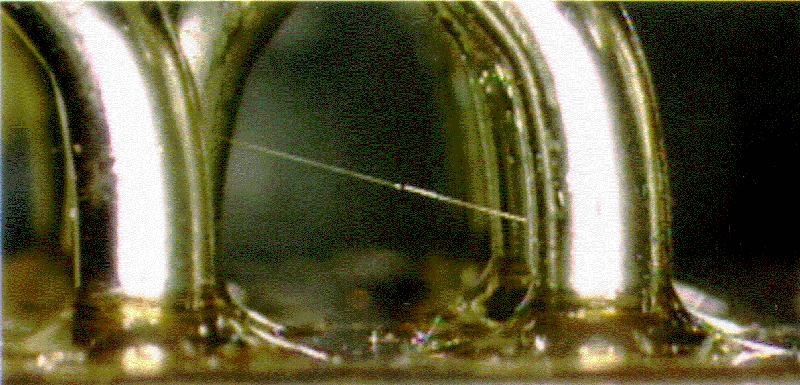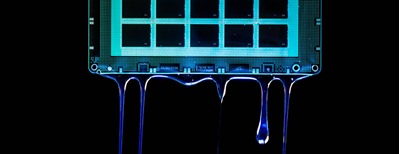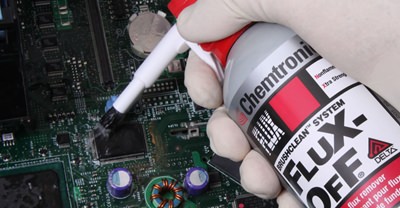After the European Union’s legislation of Restriction of Hazardous Substances (RoHS) which prohibits the use of Lead (Pb) in electronics manufacturing, electronics manufacturers have transitioned toward Pb-free products. Solder material has particularly undergone a complete shift from lead to other metals and their alloys.
Among all the possible replacements for lead, tin is considered the predominant choice for solder alloys [1]. However, the use of pure tin causes a serious reliability issue in electronics in the form of tin whiskers. A tin whisker is able to bridge the gap between the terminals of components in modern miniaturized PCBs. The conductive nature of the tin whiskers creates current leakage risk and, in the extreme case, a short circuit. Both these conditions may cause a temporary or permanent failure in the electronics assembly.
This article explores the causes of tin whiskers in PCBs, and their adverse effects on the performance of high-reliability electronics. The need to mitigate tin whisker growth and their methods are discussed next. Finally, the article highlights some products from Chemtronics that help engineers mitigate the growth of tin whiskers in PCBs.
Tin Whiskers and Their Effects on PCBs
Tin whiskers are highly conductive hair-like structures (up to thousands of microns) that essentially grow out of lead-free tin-coated surfaces (Figure 1). Tin whiskers are generally long enough to cause a short circuit in populated PCBAs and may cause sustained arcing. This may pose a serious threat to critical safety systems in high-reliability applications like military and aerospace.
Tin whisker formation is one of the major failure modes associated with electronic devices and it has been an area of intensive research over the past few years [1][2] [3] [4]. Tin whiskers are most likely to grow on tin surfaces in the presence of all or any one of the following factors [2]:
- Mechanical Stress
- High Temperature
- High Humidity
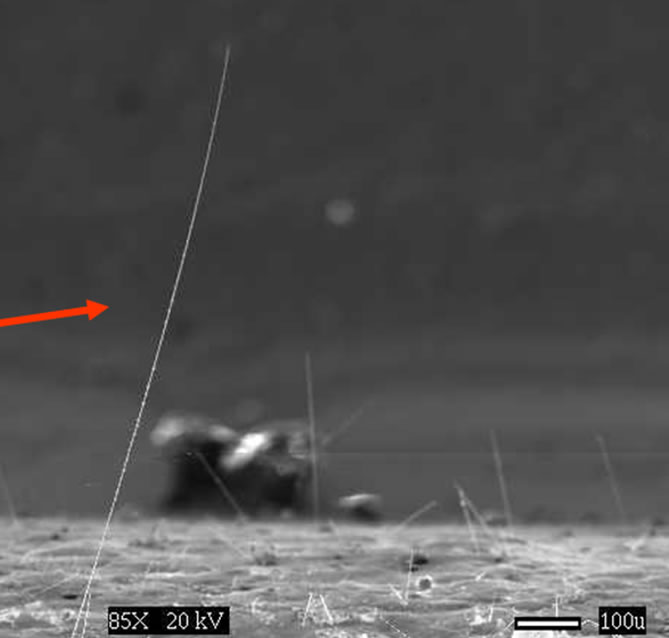
Figure 1: Tin whiskers [2]
The presence of lead in solder minimizes their growth, but lead has been declared a hazardous substance and banned from use in electronic devices. Tin is now the predominant choice for solder because of its low manufacturing cost. The tin whiskers more often originate from solder joints containing tin and tin-plated component leads. The solder joints are subjected to different stresses and provide favorable conditions for whisker growth. One thing to remember here is that tin whiskers are very different from dendrites. Tin whiskers grow outward (z-axis) whereas dendrites grow along a surface (x-y plane). Moreover, dendrites grow due to the presence of an electromagnetic field whereas whiskers do not [3].
How to Stop the Growth of Tin Whiskers?
Tin whisker growth is primarily linked to the manufacturing process.
To halt the growth of tin whiskers, the first option is to completely eliminate pure tin from electronics manufacturing. However, its excessive use by the vendors makes this move almost impossible to implement.
Secondly, the use of components with no bent leads are less likely to promote whisker growth e.g., TDFN, TQFN, and QFN packages.
Another possibility to stop their growth is to remove the generation and relaxation of stresses. Stress generation can be stopped by blocking the diffusion of copper into tin with the use of a nickel diffusion barrier because nickel is a whisker barrier. However, no method to remove stress relaxation exists [5].
To date, no accepted method exists to prevent the growth of tin whiskers entirely. However, mitigation strategies do exist.
Tin Whisker Mitigation Strategies
PCBA and Component Cleaning
The ionic contamination on PCBAs in the form of flux residues and ions of Cl-, SO-24, and Br- initiates the growth of tin whiskers from solder joints [6] [7]. In a case study, a comparative analysis of tin whisker growth has been carried out using cleaned and contaminated PCBAs and components [8].
The whisker growth test was done following the JEDEC JESD22-A121A standard. A two-sided PCB with components of different package sizes was taken as the test specimen, as shown inFigure 4. The components were soldered using SAC305 alloy using a no-clean assembly. Solution of NaCl, Na2SO4, and (CH3CH2)2NH2Br was used to contaminate the components while ROL0, ROL1, and ORH1 fluxes were used to contaminate the PCBAs.
To provide testing conditions, a temperature of 85oC and relative humidity (RH) of 85% was maintained in a chamber. By using Scanning Electron Microscopy (SEM) for tin whisker inspection, it was found that after 500 hours of exposure in the chamber, the PCBAs assembled using cleaned components showed no tin whisker growth, whereas the contaminated components did.
The greatest length of whiskers was noted in the most contaminated boards. This is depicted in Figure 2. Moreover, in the presence of flux residues, more enhanced growth of tin whiskers was observed as shown in Figure 3. Moreover, signs of oxidation and corrosion were visible where whiskers were present which indicates that oxides of tin might have caused tin whisker growth. It is clear that contaminated boards (component/assembly or both) are vulnerable to tin whisker growth whereas cleaning (prior to and post assembling) significantly mitigates the risk of these undesirable whiskers even under high humidity.
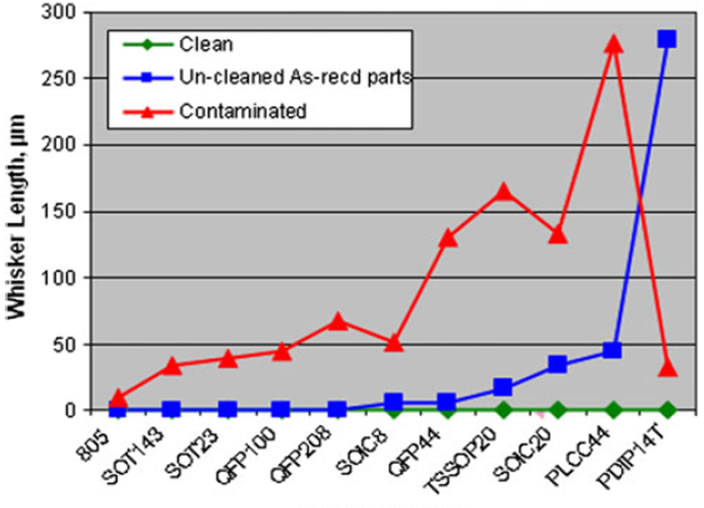
Figure 2: Whisker length vs assembly cleanliness [8]

Figure 3: Contaminated board + contaminated components result in greatest tin whisker growth [8]
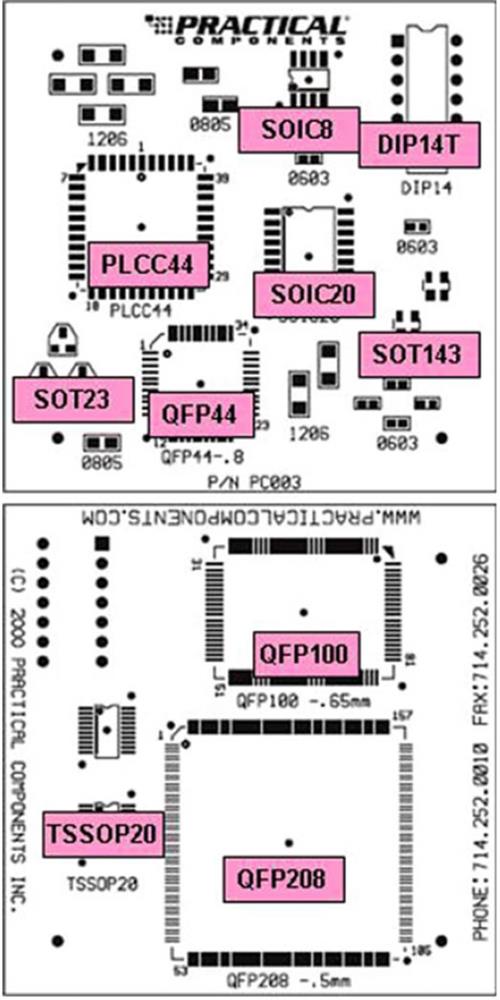
Figure 4: Test PCB used in [8]
Conformal Coating
Another effective strategy to mitigate the effects of tin whiskers is to use conformal coatings on PCBAs. There are three main reasons to do so [4].
- They prevent the whisker from penetrating through the surface
- They prevent shorting out of conductors
- They act as an insulating medium for conductive debris
The effectiveness of conformal coatings in the mitigation of tin whisker growth has been proven in numerous research works and case studies. One study tested coupons composed of brass with bright sulfate tin which were subjected to various conformal coating types and thicknesses [1]. The coupons were placed in a test chamber maintained at 50oC and 50% RH for 419 days. Some areas were coated while others remained uncoated to obtain conclusive test results. After 119 days in the test chamber, the coated coupons showed growth of tin whiskers under the coating except for the parylene and silicone coating, the latter of which showed negligible growth. After 336 days of testing, thinner regions of silicone coating were penetrated by the whiskers.
However, the coated portions resisted the growth of whiskers compared to the uncoated coupons. The silicone coating performed well when it was applied with sufficient thickness. It was concluded that thin (0.6-1.5 mils) coatings did not perform well in mitigating the whisker growth whereas thicker (3.9-6 mils) coatings were found effective.
In another study, two types of test coupons (base material C110 alloy and Alloy 42) coated with bright tin were analyzed for tin whisker growth. After cleaning, some parts of the coupons were coated while the remaining were left uncoated. A bend of 45o at two places (tension and compression) was introduced in some test coupons. The test chamber was maintained at 50oC and 50% RH and coupons were placed in it for 9 years [9].
The tin whisker densities found in stressed (tension and compression) and uncoated regions are summarized in Table 1. It is important to mention that those coated coupons that were not stressed did not have any tin whiskers. In the coated and bent coupons with C110 base metal, the tenting of tin whiskers was observed for acrylic coating up to 2 mils thickness. Acrylic coating of 3 mils showed no tenting or penetration (both in compression and tension) in either C110 and Alloy 42 base metal samples.
This result is intuitive as the whiskers are very thin and they are not able to penetrate thicker conformal coatings, in fact, they are trapped inside the coating and bend easily (Euler buckling) thus unable to do any harm. Another technical aspect of thin coatings is that they develop greater compressive stresses as compared to thick coatings and hence are more vulnerable to whisker protrusion.
| Whisker Density (#/mm2) | ||||||||||
| 2004 | 2005 | 2006 | 2007 | 2008 | 2009 | 2010 | 2011 | 2012 | 2013 | |
| Copper C110 | 0 | 2 | 5 | 13 | 19 | 26 | 31 | 34 | 36 | 39 |
| Alloy 42 | 0 | 4 | 11 | 21 | 22 | 47 | 53 | 57 | 60 | 62 |
| Copper C110 (Compression) | 0 | 3 | 9 | 20 | 29 | 53 | 72 | 101 | 121 | 128 |
| Alloy 42 (Compression) | 4 | 38 | 71 | 131 | 212 | 291 | 320 | 336 | 352 | 367 |
| Copper C110 (Tension) | 0 | 2 | 7 | 16 | 22 | 31 | 40 | 48 | 57 | 59 |
| Alloy 42 (Tension) | 3 | 18 | 41 | 74 | 94 | 130 | 161 | 182 | 201 | 216 |
Table 1: Tin densities in bent and uncoated coupons [9]
Chemtronics Line of PCBA Cleaners
PCBA cleanliness is the first line of defense against tin whiskers. Chemtronics continues to be the industry’s innovative technology leader since 1958 and provides cleaning products with the greatest level of performance for electronic assemblies. Its Electro-Wash Tri-V Degreaser is the ultimate replacement for n-Propyl Bromide and effectively removes dirt, dust, flux, and grease from both the electronics components and assemblies. It is non-flammable, evaporates quickly and leaves no residues. It can be used on energized equipment, and is is the strongest cleaner offered by Chemtronics for level 3 cleaning of PCBAs.
Chemtronics line of Conformal Coatings
Conformal coatings serve as the second line of defense against tin whiskers and prevent mission-critical and high-performance electronics assemblies from damage and failure. Chemtronics was the first to take the initiative of developing lead-free products for electronics manufacturers. Chemtronics’ line of conformal coatings includes Acrylic and Silicone conformal coatings. Due to the ease of application and removal, Acrylic conformal coatings are the most popular among electronics manufacturers. Konform AR Acrylic Conformal Coating by Chemtronics provides a hard, durable protective barrier against humidity and when applied with the proper thickness, it can aid in tin whisker mitigation. The product is RoHS compliant and is suitable to be used in environments with high temperatures and humidity.
The UL-certified Konform SR Silicone Conformal Coating is suitable for both rigid and flexible PCBs and it comes in three different viscosities to match the application needs. This RoHS-compliant product is suitable for high temperature and humidity environments. When applied in proper thickness, it can disrupt the growth of tin whiskers.
References
|
[1] |
T. A. Woodrow, "Evaluation of Conformal Coatings as a Tin Whisker Mitigation Strategy," in IPC/JEDEC 8th International Conference on Lead-Free Electronic Components and Assemblies, San Jose, 2005. |
|
[2] |
D. H. L. /. N. G. Jay Brusse / Perot Systems, "Metal Whiskers A Discussion of Risks and Mitigation," NASA, 2008. |
|
[3] |
J.-o. S. A. T.-C. W. N. T. C.-H. T. King-Ning Tu, "Mechanism and Prevention of Spontaneous Tin Whisker Growth," Material Transactions, vol. 46, no. 11, 2005. |
|
[4] |
T. Tsukui, "International Symposium on Whisker," 2008. |
|
[5] |
IFA, "Tin whiskers on printed circuit boards," IFA, 2014. |
|
[6] |
NASA, 17 1 2019. [Online]. Available: https://nepp.nasa.gov/whisker/background/index.htm. [Accessed 24 8 2022]. |
|
[7] |
D. Hillman, "Cleaning & Conformal Coating," in IPC/SMTA, 2010. |
|
[8] |
S. M. Z. B. E. K. M. R. &. J. K. Polina Snugovsky, "Whisker Formation Induced by Component and Assembly Ionic Contamination," Journal of Electronic Materials, vol. 41, p. 204–223, 2012. |
|
[9] |
L. W. a. W. Fox, "Tin Whisker Risk Management by Conformal Coating," in IPC APEX EXPO Conference Proceedings, 2014. |
Photo Courtesy of Andre Pelham (Intern) NASA Goddard Space Flight Center
Ask A Technical Question
Stay up-to-date on Chemtronics news, products, videos & more.

